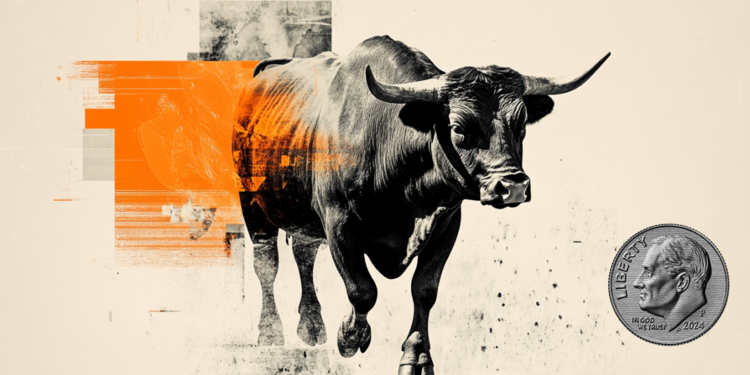USD/INR rises on foreign funds outflows, US Dollar demand
- The Indian Rupee weakens in Tuesday’s early European session.
- Significant foreign funds outflows and strength in the US Dollar weigh on the INR.
- The RBI intervention might help limit the INR’s losses.
The Indian Rupee (INR) depreciates on Tuesday. Analysts expect the local currency to trade with negative bias amid weakness in the domestic equities and Foreign Institutional Investors (FII) outflows. A recovery in the US Dollar (USD) and fears of a global trade war in response to Trump's tariff measures might contribute to the INR’s downside.
Nonetheless, any significant decline in the INR might be capped amid further intervention by the Reserve Bank of India (RBI). Investors await the release of the NY Empire State Manufacturing Index for February, which will be released later on Tuesday. Also, the Federal Reserve's (Fed) Mary Daly is set to speak.
Indian Rupee remains weak amid FII outflows
- India's trade deficit widened to $22.99 billion in January from December's $21.94 billion, according to government data on Monday.
- India’s Exports stood at $36.43 billion in January, while Imports rose to $59.4 billion during the same reported period, said the government data.
- The government reported in December last year that India’s trade deficit widened to an all-time high of $37.84 billion but the number was revised to $32.84 billion after the gold imports revision. A Union Bank of India report suggested that this improvement was likely influenced by a decline in gold imports, as higher global prices reduced demand.
- "The Indian rupee declined today on a weak tone in the domestic markets and a recovery in the US dollar index from intraday lows. However, a weak tone in crude oil prices and a decline in US Treasury yields cushioned the downside," said Anuj Choudhary, Research Analyst at Mirae Asset Sharekhan.
- On Friday, US President Donald Trump maintained his drumbeat of tariff threats, stating that taxes on autos would begin as soon as April 2. It was the latest in a series of trade measures he has announced since taking office for the second time.
USD/INR’s broader trend remains constructive
The Indian Rupee trades on a softer note on the day. According to the daily chart, the USD/INR pair keeps the bullish vibe as the price is above the key 100-day Exponential Moving Average (EMA). Furthermore, upward momentum is supported by the 14-day Relative Strength Index (RSI), which stands above the midline near 55.0, hinting that the path of least resistance is to the upside.
The first upside barrier for USD/INR emerges at the 87.00 psychological level. A decisive break above this level, the pair could set its sights back up on an all-time high near 88.00, en route to 88.50.
In the bearish event, the initial support level is located at 86.35, the low of February 12. A breach of the mentioned level could set off a drop to 86.14, the low of January 27.
Indian economy FAQs
The Indian economy has averaged a growth rate of 6.13% between 2006 and 2023, which makes it one of the fastest growing in the world. India’s high growth has attracted a lot of foreign investment. This includes Foreign Direct Investment (FDI) into physical projects and Foreign Indirect Investment (FII) by foreign funds into Indian financial markets. The greater the level of investment, the higher the demand for the Rupee (INR). Fluctuations in Dollar-demand from Indian importers also impact INR.
India has to import a great deal of its Oil and gasoline so the price of Oil can have a direct impact on the Rupee. Oil is mostly traded in US Dollars (USD) on international markets so if the price of Oil rises, aggregate demand for USD increases and Indian importers have to sell more Rupees to meet that demand, which is depreciative for the Rupee.
Inflation has a complex effect on the Rupee. Ultimately it indicates an increase in money supply which reduces the Rupee’s overall value. Yet if it rises above the Reserve Bank of India’s (RBI) 4% target, the RBI will raise interest rates to bring it down by reducing credit. Higher interest rates, especially real rates (the difference between interest rates and inflation) strengthen the Rupee. They make India a more profitable place for international investors to park their money. A fall in inflation can be supportive of the Rupee. At the same time lower interest rates can have a depreciatory effect on the Rupee.
India has run a trade deficit for most of its recent history, indicating its imports outweigh its exports. Since the majority of international trade takes place in US Dollars, there are times – due to seasonal demand or order glut – where the high volume of imports leads to significant US Dollar- demand. During these periods the Rupee can weaken as it is heavily sold to meet the demand for Dollars. When markets experience increased volatility, the demand for US Dollars can also shoot up with a similarly negative effect on the Rupee.
Forex News
Keep up with the financial markets, know what's happening and what is affecting the markets with our latest market updates. Analyze market movers, trends and build your trading strategies accordingly.
